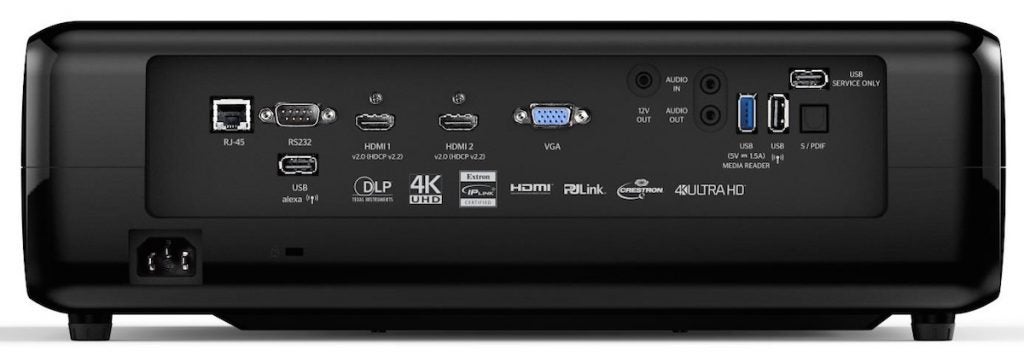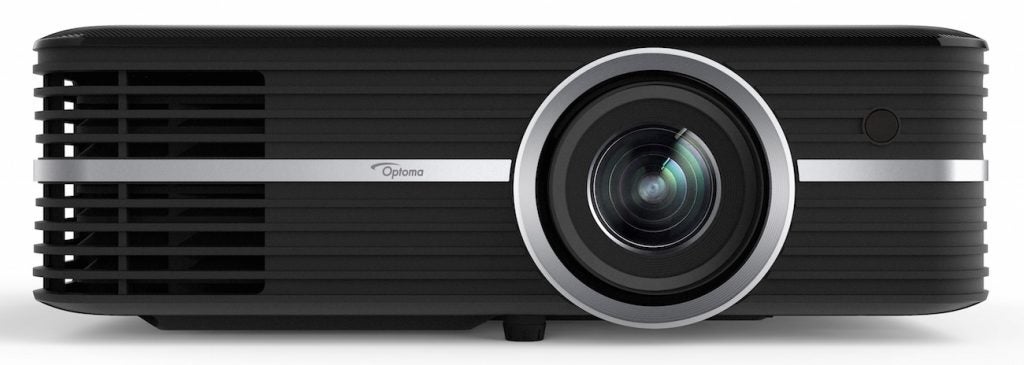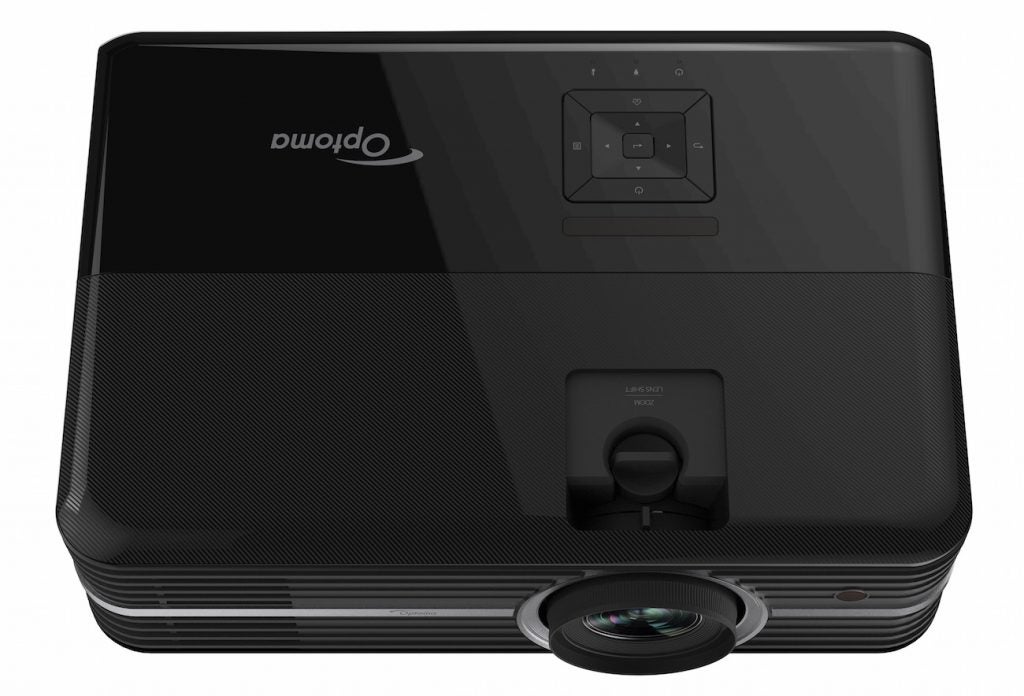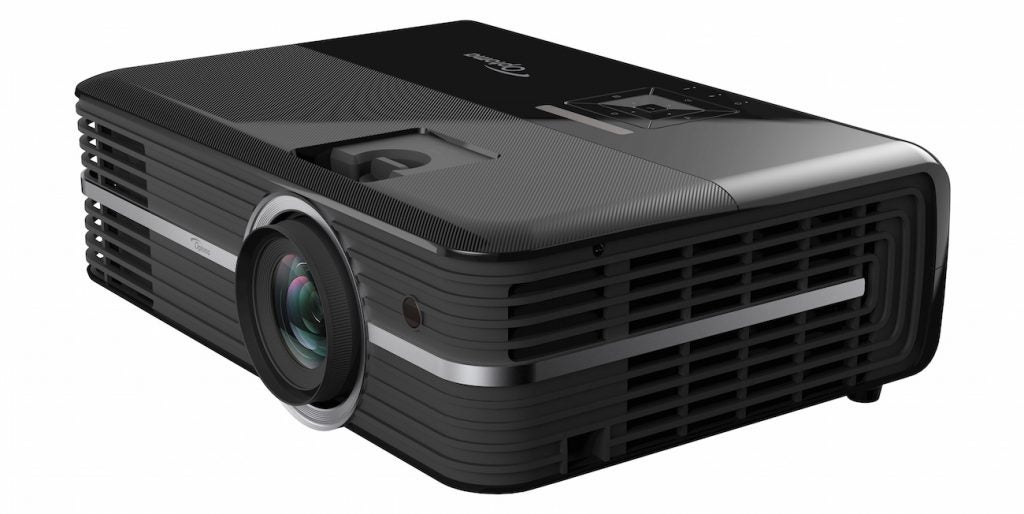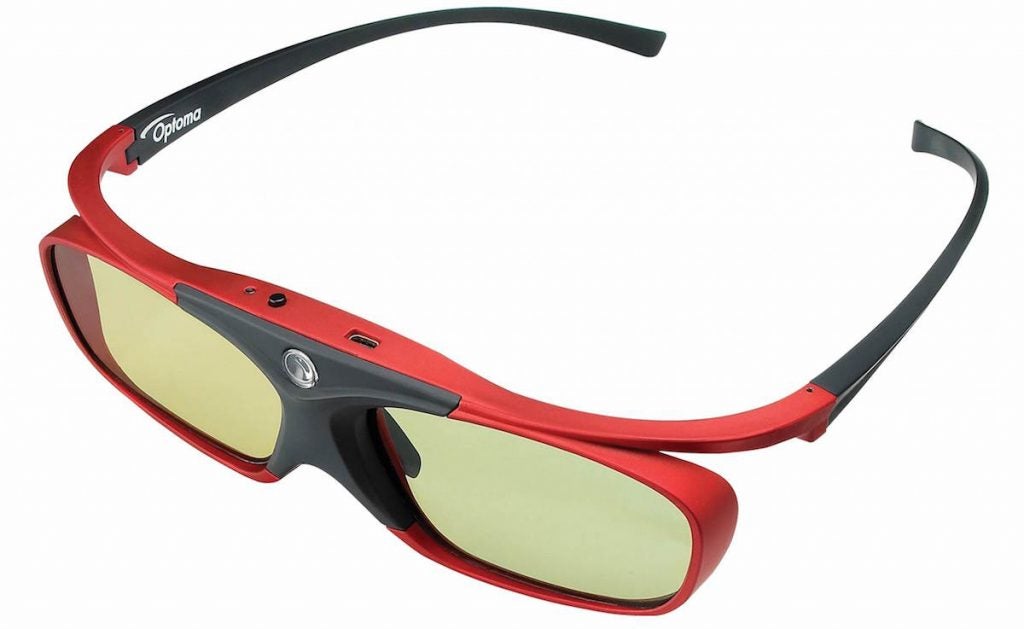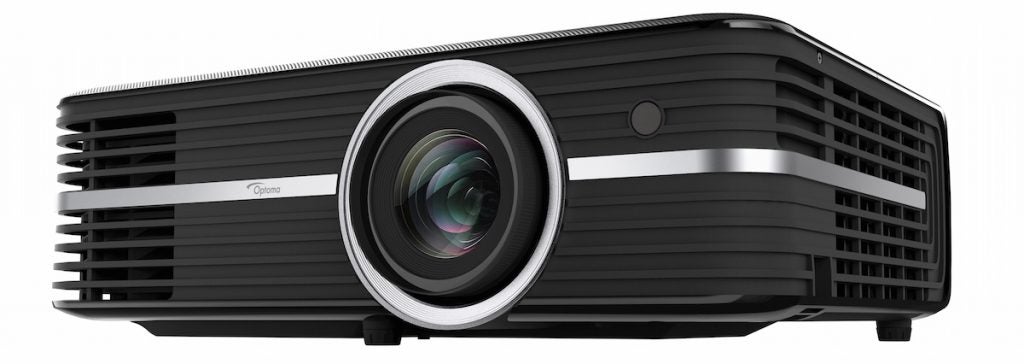Optoma UHD51ALVe Review
Optoma UHD51ALVe
This Amazon Alexa-enabled projector is a party animal – and delivers a welcome reminder of 3D
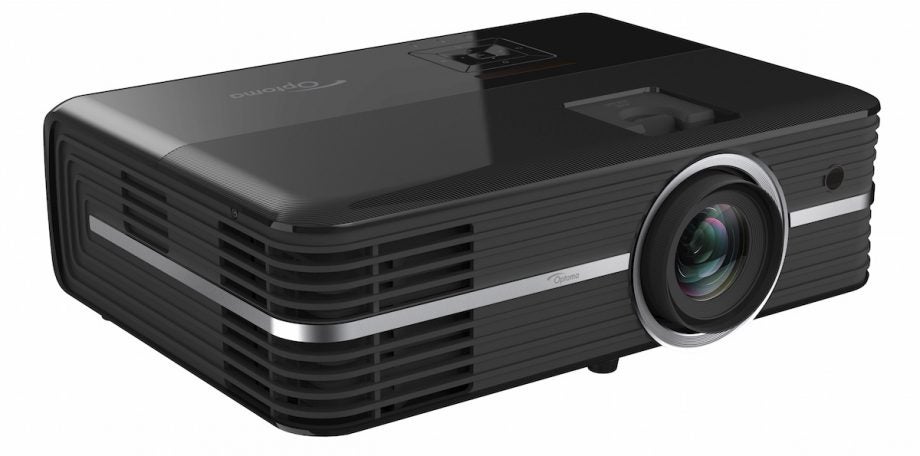
Verdict
While not perfect for serious home cinema lovers and gamers, the UHD51ALVe's extreme brightness, 4K resolution and strong colour make it a potential hit with fans of 3D and sports
Pros
- Exceptionally bright for its money
- Alexa works well
- Great for 3D and sports playback
Cons
- Black levels below par for SDR and HDR
- Motion is a bit glitchy
- Alexa is a faff to set up
Key Specifications
- Review Price: £1600
- "4K" single-chip DLP projector
- HDR10 HDR support
- Built-in media player
- Alexa Voice control support
- 3200 lumens maximum light output
What is the Optoma UHD51ALVe?
The Optoma UHD51ALVe is a groundbreaking new home cinema projector. It differs from any major rival to date by supporting wireless network connectivity and Alexa interface support. This means you can stream files to it from networked devices and, provided you have an Amazon Echo device, control it with your voice.
It also boasts exceptionally high brightness and contrast for a £1600 projector – all delivered via a “4K”, HDR-capable DLP projection engine.
Related: Optoma’s 4K UHD51ALVe projector supports Alexa
Optoma UHD51ALVe – Design and Build Quality
The UHD51ALVE is a touch larger than your average “lifestyle” projector, but it will still sit comfortably on a typical side table. Also, while it isn’t the prettiest projector in town, nor does it drag your decor down.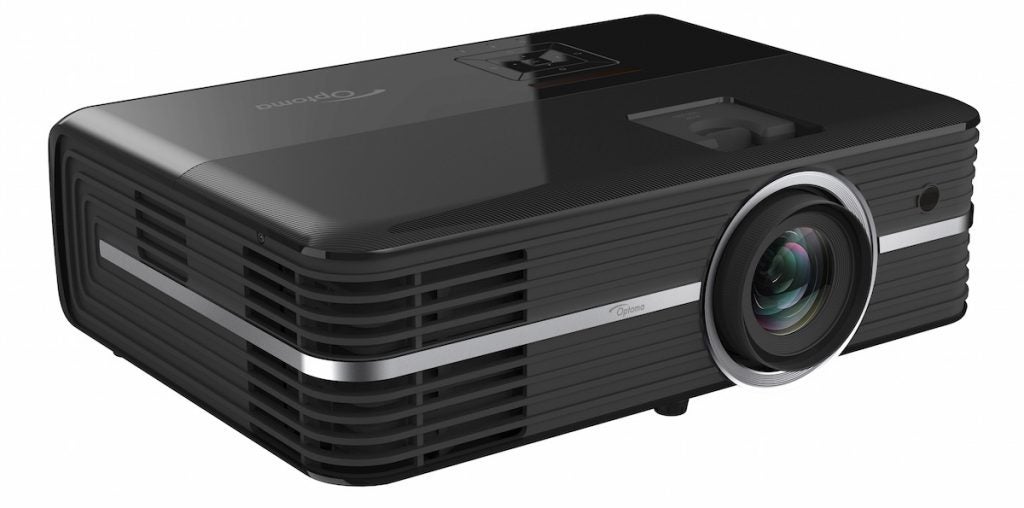
The ribbed sides are enhanced by a neat silver metallic highlight strip that also runs around the lens, while the control buttons on the projector’s top edge are neatly contained in a tidy square arrangement.
The two-section top panel is appealing, too – especially the way it sports a different finish for each half.
The remote control that ships with the UHD51ALVe is unusually small and thin. This isn’t ideal for a handset likely to be predominantly used in a dark room. Especially since the buttons lack any backlighting.
At least its layout is reasonably logical, so it isn’t too hard to learn how to find the key buttons by touch alone.
Related: Amazon Alexa Guide – Features, entertainment, smart home and more
Optoma UHD51ALVe – Features
Despite costing just £1600, the UHD51ALVe supports both 4K and high dynamic range playback. The 4K support isn’t truly native “pixel for pixel” 4K support of the sort you get with Sony’s much more expensive 4K projectors. Instead, it’s delivered via multiple flashes per image frame of a sub-4K set of “mirrors” that form part of its DLP-based projection system.
Previous tests have shown that the UHD51ALVe’s DLP approach can certainly deliver pictures that at least look higher in resolution than HD.
However, the UHD51ALVe’s “USP” is its network capabilities. A little USB dongle shipped as standard with the projector can connect with either your standard Wi-Fi network or Alexa devices. The former lets you play files into the projector wirelessly from other networked devices. The latter lets you control the projector with your voice, via any Amazon Echo devices located in your home.
Related: What is 4K TV and Ultra HD? All you need to know about 4K
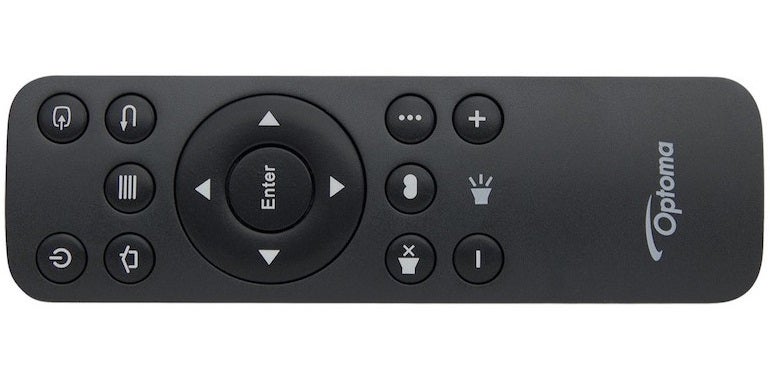
Alexa control is mostly limited to fairly rudimentary stuff: “Alexa, change input to HDMI 1 on projector”, “Alexa, power up projector”, “Alexa, set volume to 5 on projector” and so on. Nevertheless, it’s handy – especially given how easy it is to lose the UHD51ALVe’s remote control in a dark room!
It’s worth noting, too, that you can issue playback instructions if you’re playing content via the projector’s built-in media player. “Alexa, Stop on projector”, “rewind on projector”, and so on.
It’s a pity, perhaps, given the projector’s network capabilities that it doesn’t carry any built-in streaming apps: Netflix, Amazon Prime Video, YouTube and the like. But I guess we can only fairly expect one networked projector innovation at a time.
The UHD51ALVe is unusually rich in connections for £1600. It has no less than four USB ports, for instance: one for the wireless dongle in Alexa mode, one for the dongle in wireless network node, one for USB multimedia drives, and one for service updates.
Related: Best streaming sites
Its twin HDMIs are joined by a 15-pin D-SUB PC port, an RS-232 control port, a 12V trigger port, an Ethernet port, 3.5mm audio in/outs, plus an optical audio in.
The audio ports are there because the projector carries a built-in audio system. This isn’t very powerful; just 2 x 5W. But at least it’s there for those times when you can’t find/be bothered with an external audio system.
The HDMIs, meanwhile, also go further than most by both supporting HDCP 2.2, for 4K HDR playback. Note, though, that while 24p 4K HDR works fine, the UHD51ALVe struggled to stay locked onto 60Hz 4K HDR feeds.
The UHD51ALVe’s specifications suggest that it hasn’t forgotten about picture quality in its rush to integrate Alexa controls. Its purported light output of 3200 lumens is exceptionally high, for instance. As is the claimed dynamic contrast ratio of 500,000:1. The reported 15,000-hour lamp life when using the Dynamic lamp setting also sets it apart – and makes the £1600 asking price look even better value.
One final surprise up the UHD51ALVe’s sleeves is a built-in motion processor with a number of different strength settings.
Related: What is HDR?
Optoma UHD51ALVe – Setup
The Optoma UHD51ALVe supports both a decent amount of optical zoom and vertical image shifting. This makes it easy to get its pictures in the right place on your screen. It also means you’re less likely to need picture-distorting keystone correction to get the edges of the picture straight. Which is just as well, as the projector doesn’t actually support keystone correction anyway!
The vertical image shifting is easily accomplished via a simple wheel on the projectors top edge, while zoom and focus are delivered by straightforward ring adjustments around the lens.
The UHD51ALVe’s menus offers everything you need to perform a full calibrated installation. Including full colour management, ISF Day and Night presets, and various contrast and brightness controls.
However, the PureMotion processing is a bust. Using any of its three settings causes momentary pauses and stutters during camera pans that prove far more distracting than the judder you get with PureMotion turned off – even though that native judder feels a little more pronounced than usual.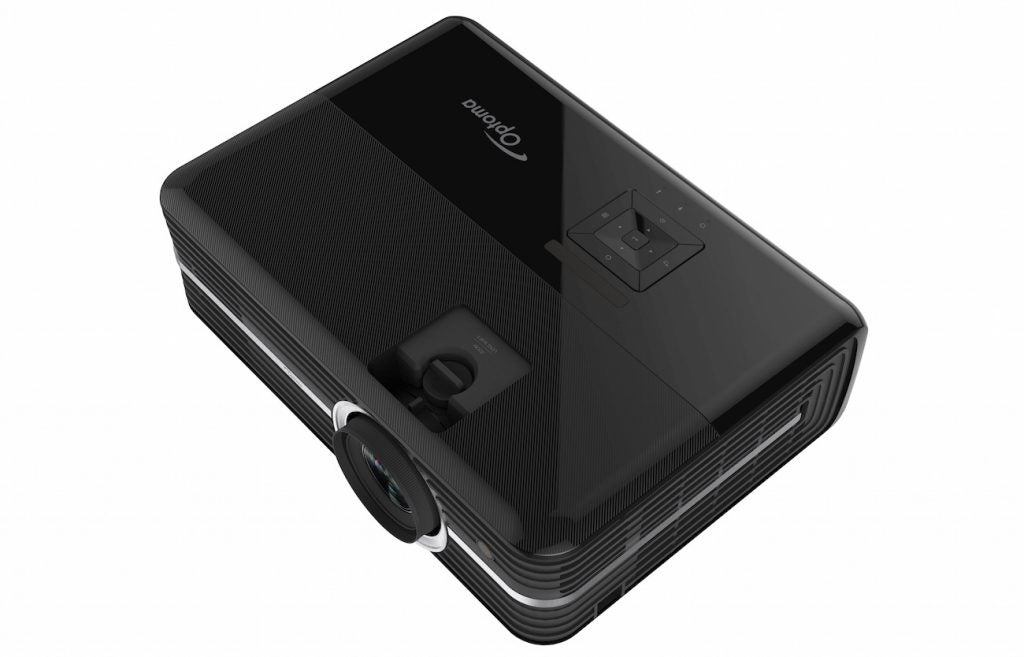
Other settings to pay particular attention to are as follows. First, I’d suggest sticking with the Standard HDR mode over the Film one. The latter improves black levels but makes the picture too dark for comfort, crushing out shadow detail in the process.
I’d also recommend using the Dynamic Black feature, since it boosts lamp life without seemingly damaging the picture. In fact, it seems to improve the picture, especially with standard dynamic range sources.
Unless you’re getting your projector properly calibrated, stick with the Cinema preset for movie viewing and the Game mode when gaming. The Game mode reduces the time the UHD51ALVe takes to render pictures – although only, sadly, to a far from inspiring 74ms.
If you try the Optoma UHD51ALVe’s 3D playback, you might need to activate the 3D Sync Inverter feature. Certainly, I had to, otherwise the 3D effect looked reversed, with background objects brought to the front and vice versa.
One last thing to add in this section is that the projector’s Alexa capabilities are very complicated to set up. Don’t even attempt it without having Optoma’s supplemental Alexa instructions in front of you.
Optoma UHD51ALVe – Performance
Although the UHD51ALVe’s on-paper picture stats are impressive, there’s always a worry that an affordable projector boasting a brightness output as high as 3200 nits will struggle with black level. And so, unfortunately, it proves. But how much that puts you off the UHD51ALVe depends hugely on how you intend to use it.
Given that a 4K HDR projector costing £1600 is arguably more attractive to serious home cinema fans than relatively casual users, let’s start with its home cinema performance.
If you’re watching in a well blacked-out room, as most film fans will want to be, dark scenes are, sadly, heavily dominated by greyness where there should be blackness. With HDR sources in particular, dark scenes – especially those containing bright elements – look seriously washed out. This makes the image feel flat, bleaches dark colours, and sometimes hides shadow detail behind the grey “wash”.
Even with standard dynamic range sources, where the lamp and contrast controls don’t have to work so hard, black levels lack contrast for a £1600 projector. Albeit to a far less distracting degree.
Ironically, the UHD51ALVe’s issues with dark HDR scenes are exacerbated by its strikingly impressive performance with bright HDR scenes. When that powerful lamp has a full screen of bright HDR goodness to feed, the image really “pops”. In fact, with such uniformly bright content the HDR lift is greater than with any other sub-£2000 projector I can think of.
Colours look impressive with bright HDR content, too. The slightly wan tones seen during dark scenes are replaced with a rich, vibrant palette that still looks impressively natural.
There’s some decent subtlety in the UHD51ALVe’s HDR colour rendering, too, aided and abetted by the projector’s 4K resolution and a general freedom from colour banding issues.
While 4K sources do look higher in resolution on the UHD51ALVe than HD ones, they don’t look quite as crisp and detailed as they do on Sony’s native 4K projectors. But even the cheapest of these Sonys costs more than three times as much as the Optoma. So in the circumstances, getting a “something like” 4K picture for £1600 doesn’t look like a bad deal. Especially since it’s also a very respectable handler of HD sources, which enjoy a small but noticeable detail enhancement without source noise becoming exaggerated.
Watching HD standard dynamic range sources also reveals plenty of subtlety and refinement within SDR’s narrower colour range. There can be no doubt, basically, that this projector has been tuned for movies. Even if its thirst for brightness has compromised its black levels and, by extension, its colour neutrality during dark scenes.
The uninspiring black levels aren’t the UHD51ALVe’s only problem with movies, however. Its 24p motion handling also looks rather shuddery in its standard form. Yet, as noted earlier, the motion processing options actually make things look worse.
There’s also a little of DLP’s rainbow effect (fleeting stripes of red, green and blue over bright objects) during high contrast HDR shots.
At which point it’s time I turned my attention to situations where the UHD51ALVe has real appeal. First, if you’re after a projector mostly for watching sports, this Optoma’s preference for brightness over black level can be a strength. After all, sports footage generally doesn’t feature many dark shots or picture areas. More important is making the pitch or track and the sportsmen using it look bright and colourful.
In addition, the UHD51ALVe’s brightness is good enough to leave sports footage very watchable, even with ambient light in your room. This is ideal for people who like to host big match parties.
The high brightness also leaves films more watchable in bright rooms than they are with most projectors. But these sorts of viewing conditions will generally only appeal to relatively casual film fans. Proper home cinephiles will be looking to use projectors in dark rooms, where possible.
If you’re still into 3D, the UHD51ALVe’s brightness is also massively helpful. There is, of course, some reduction in brightness, as is inevitable with the “active shutter” 3D system the UHD51ALVe uses. But its 3D pictures still level out much brighter than those of most affordable 3D projectors.
What’s more, they achieve this high brightness without generating distracting amounts of flicker or crosstalk ghosting noise. The lack of crosstalk is particularly impressive on such a bright projector, helping to deliver impressive 3D depth and definition without tiring your eyes.
Detailing looks properly Full HD with 3D sources, too. And as a final, more unexpected bonus, black levels actually look much better in 3D than they do in 2D – thanks, presumably, to the slight dimming effect of Optoma’s excellent new ZD302 3D glasses. My only (relatively small) complaint about the UHD51ALVe’s 3D playback is the way moving objects can look a little indistinct and “shimmery”.
Finally, the UHD51ALVe’s built-in sound system turns out to be pretty basic. Sound is thin, severely lacking in bass and routinely becoming harsh with treble details. Dialogue tends to get swallowed up in dense sound moments, too.
Take note, too, that the PureMotion processing causes a pretty major sound slippage – as much as 140ms, according to my 4K Blu-ray player’s AV Sync setting. So that’s a second reason to give PureMotion a wide berth!
Why buy the Optoma UHD51ALVe?
As I’ve hopefully made clear in the previous section, the UHD51ALVe’s appeal depends on what you want a projector for.
In my opinion, Optoma’s latest model isn’t a great option for serious movie fans wanting to create a “bat cave” home cinema experience. It just doesn’t have good enough black levels for that. Serious movie lovers should perhaps look instead at the Optoma UHD65, for example – if you can afford it – or the Sony VPL-HW65ES. Even though the Sony doesn’t support 4K or HDR.
Although I haven’t tested it myself, I suspect the cheaper Optoma UHD51A might be a better option for movie fans, too. It’s much less bright (2400 lumens), and so may well produce slightly richer colours and, potentially, significantly deeper black levels.
Certainly it should be at least worth trialing against the UHD51ALVe if dark room cinema viewing is your bag. The UHD51ALVe’s disappointingly high input lag measurement makes it hard to recommend to video gamers.
For sports fans, though, the UHD51ALVe’s brightness and rich colours are very handy indeed. The same goes, too, for 3D fans – especially given how clear and detailed its 3D pictures look. Just bear in mind that you’ll need to spend as much as £60 extra for each pair of Optoma ZD302 3D glasses you need.
Verdict
If you’re mostly interested in sport or 3D movie playback, you can increase the UHD51ALVe’s overall score to an eight. However, its black levels aren’t best suited to home cinema fans, while its high input lag will frustrate gamers. Overall, while its Alexa compatibility is undoubtedly a nifty and useful touch, it isn’t quite enough of an all-rounder to earn more than a cautious recommendation.
Trusted Score
Score in detail
-
Value 8
-
2D Image Quality 7
-
Features 8
-
3D Image Quality 8
-
Image Quality 7
-
Design 7
Features
| Native Aspect Ratio | 16:9 |
| Projector Type | Single-chip DLP |
| Brightness (Lumen) | 3200 |
| Contrast Ratio | 500,000:1 |
| Full HD 1080p | Yes (actually claimed 4K) |
| 3D Ready | Yes (no glasses included) |
| Max Diagonal Image Size (Inch) | 302.4 |
| Lamp Type | UHP |
| Lamp power (Watt) | 240 |
A/V Ports
| HDMI | 2 |
| Digital Audio Out | Yes (optical) |
| Ethernet | Yes |
| WiFi | Yes (via provided dongle) |
Physical Specifications
| Height (Millimeter) | 118 |
| Width (Millimeter) | 392 |
| Depth (Millimeter) | 281 |
| Weight (Gram) | 5220 |

